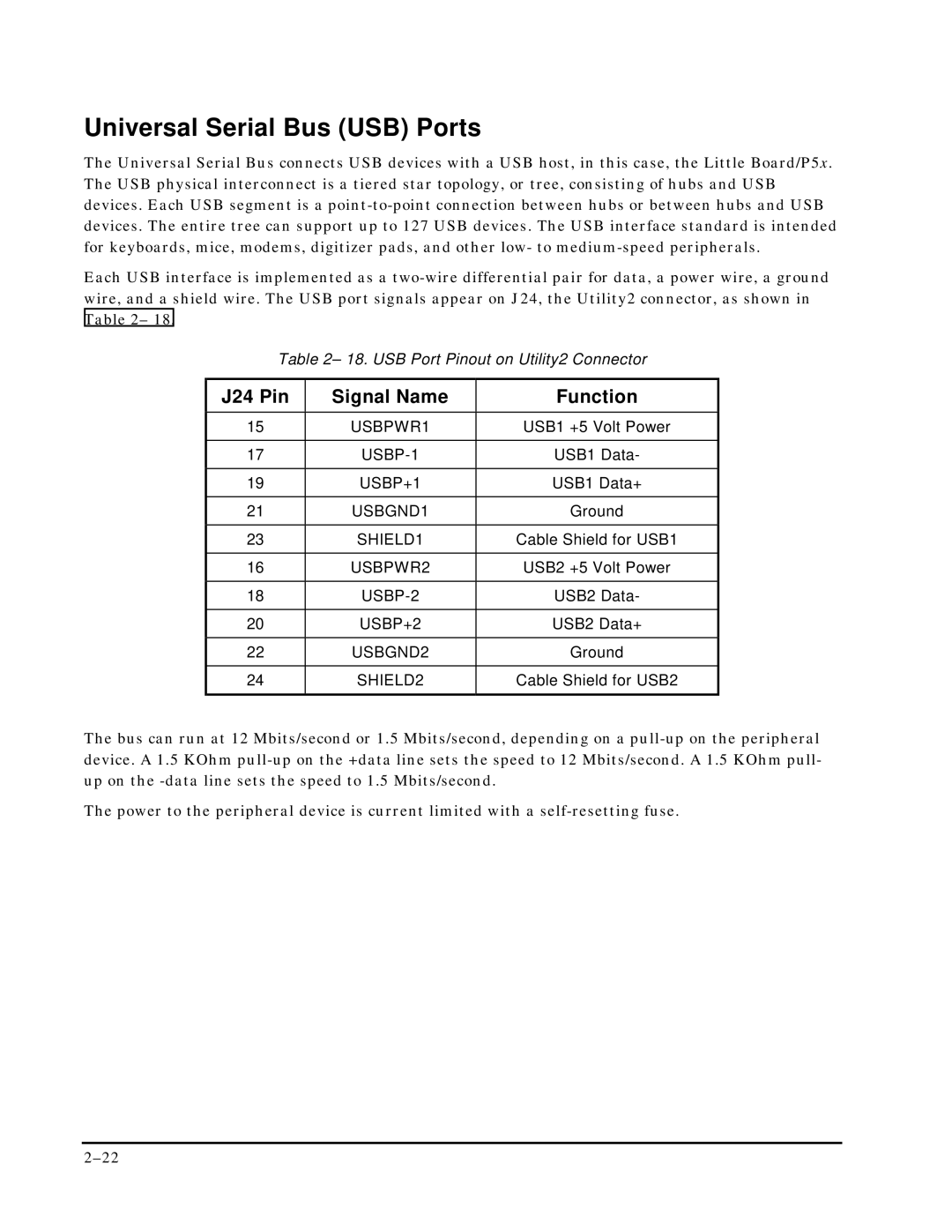Universal Serial Bus (USB) Ports
The Universal Serial Bus connects USB devices with a USB host, in this case, the Little Board/P5x. The USB physical interconnect is a tiered star topology, or tree, consisting of hubs and USB devices. Each USB segment is a
Each USB interface is implemented as a
Table 2– 18. USB Port Pinout on Utility2 Connector
J24 Pin | Signal Name | Function |
|
|
|
15 | USBPWR1 | USB1 +5 Volt Power |
|
|
|
17 | USB1 Data- | |
|
|
|
19 | USBP+1 | USB1 Data+ |
|
|
|
21 | USBGND1 | Ground |
|
|
|
23 | SHIELD1 | Cable Shield for USB1 |
|
|
|
16 | USBPWR2 | USB2 +5 Volt Power |
|
|
|
18 | USB2 Data- | |
|
|
|
20 | USBP+2 | USB2 Data+ |
|
|
|
22 | USBGND2 | Ground |
|
|
|
24 | SHIELD2 | Cable Shield for USB2 |
|
|
|
The bus can run at 12 Mbits/second or 1.5 Mbits/second, depending on a
The power to the peripheral device is current limited with a
